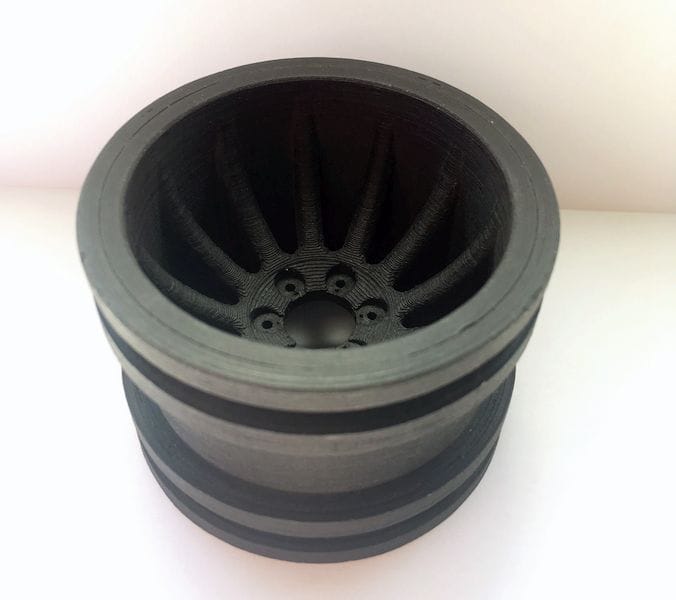
Carbon fiber reinforced 3D printing filament has been around for a while, but here’s a new option.
With the increasing availability of high temperature materials, it was inevitable that someone would combine the carbon fiber reinforcement concept to these higher temperature materials. One new option is now available from German RepRap, who have devised a PEKK / Carbon filament.
PEKK is one of the newer material that have recently entered the 3D printing scene. It’s somewhat related to PEEK chemically but offers some very interesting engineering properties. German RepRap explains:
PEKK (polyether ketone ketone) is a high temperature filament from the family of so-called PEK (polyether ketone) materials, which also includes PEEK (polyether ether ketone).
The material brings different mechanical and technical properties with it. For example, it is resistant to almost all organic and inorganic chemicals and very resistant to abrasion due to its high strength. Due to its high resistance to chemicals, PEKK can be used where the parts are exposed to many fuels, lubricants and various types of acids. Low outgassing allows the usage in confined spaces and sensitive environments.
The heat resistance of PEKK is up to 260C, making it ideal for parts destined for hot environments. Of course, you’ll need a specialized high temperature 3D printer to produce such parts, as you’ll need to hit temperatures far higher than 260C, obviously.
This sounds like a material that would certainly find many practical uses in the automotive and aerospace industries, where high reliability and high temperature environments exist.
But that’s not all. This filament apparently includes an amount of chopped carbon fiber material, increasing the strength of the 3D printed parts considerably. And that strength is not obtained at the price of increased weight, as the carbon material is lightweight.
German RepRap has now made the material available, and it is sold in 500g spools at the spectacular price of €562.87 (USD$675) each. That’s approximately USD$1350 per kg, perhaps one of the highest filament prices we’ve yet seen. But that will be the price for obtaining those fascinating engineering properties.
Despite the price, I feel this material will gain customers because of the uniqueness of the material’s properties and use in applications that can certainly afford the price. You won’t find a spool of this filament on a consumer 3D printer not only due to the price, but because you need a high temperature 3D printer to even use it.
And there are more of those available now than ever before in the history of 3D printing.
Via German RepRap

